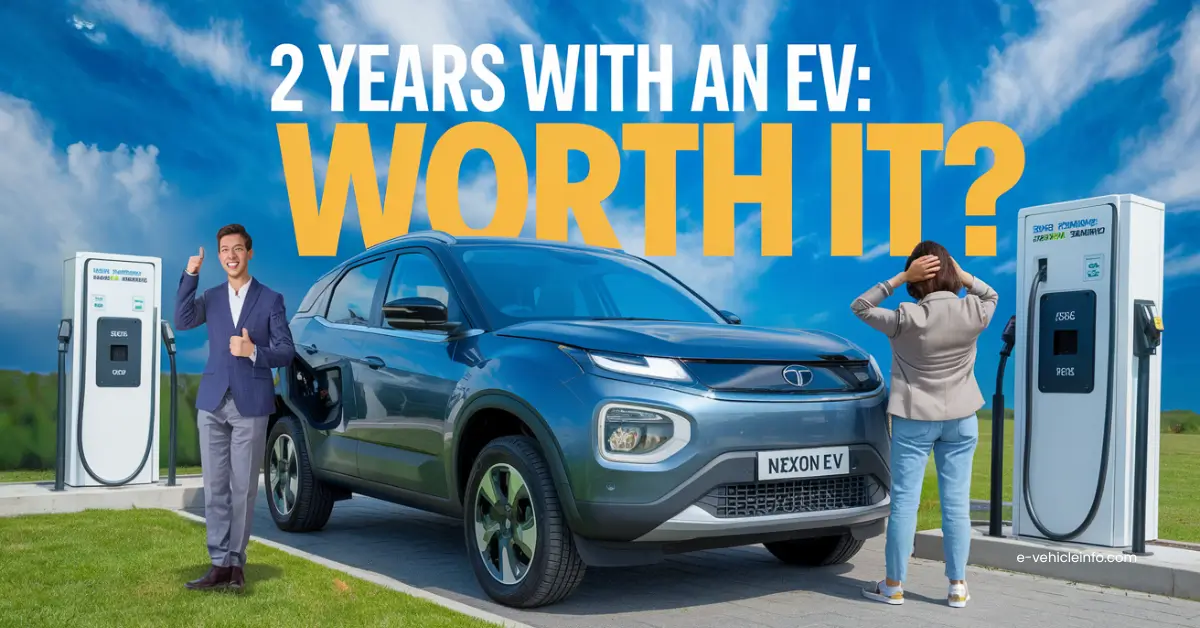
He highlights his experience with India’s very popular and Best-selling Electric Car Tata Nexon EV.
This review offers many valuable insights from range anxiety, and battery types to charging challenges that every EV buyer should consider before buying an electric car in India. here we have added his points in this article.
Battery Types: NMC vs LFP
He starts by addressing EV batteries, which are the main heart of electric cars. Initially, most EVs used NMC (Nickel Manganese Cobalt) batteries, which are not environmentally friendly and are less suitable for Indian conditions, especially during extreme summers when batteries can get very hot.
However, most manufacturers are now shifting to LFP (Lithium Ferro Phosphate) batteries, which perform better under Indian weather conditions.
LFP batteries offer a significant advantage over NMC batteries in terms of durability. While NMC batteries support about 700-750 charge cycles, LFP batteries can handle between 1,500 to 3,000 cycles. This longevity makes LFP batteries ideal for long-term usage, providing better value for EV owners.
One major misconception about EVs is that they can always rely on DC fast chargers. While DC fast charging may seem convenient, the user warns that frequent use can harm the battery over time.
He advises EV owners to prioritize home charging to maximize battery life.
The shift towards larger battery packs in modern EVs, such as 45 kWh, 59 kWh, or even 79 kWh (as seen in newer Mahindra models), means these vehicles require bigger chargers.
For faster AC charging, users need adequate space to install chargers and manage their home’s electricity capacity.
Charging an EV at home requires careful planning.
The user points out that most homes have an electric limit of around 5 kWh. If you install a 7.2 kWh AC charger for faster charging, it could exceed the limit.
EV owners may need to upgrade their home’s electric load capacity or explore alternative solutions to ensure seamless charging.
Living in an apartment complex brings unique challenges for EV owners.
Initially, the user faced difficulties charging his Tata Nexon EV Max (40 kWh battery) in his society, where he was allocated only two 16-amp points. With over 1,100 flats in his complex, he encountered frequent limitations and had to rely on slow 3.3 kWh chargers.
The user advises those living in flats to check for adequate charging infrastructure before purchasing an EV. While some societies allow installing private chargers in designated parking spaces, the installation costs can be extremely high.
Buyers must factor in these potential expenses when transitioning to EVs.
To ensure optimal performance and longevity of LFP batteries, the user emphasizes the importance of charging them correctly. Unlike NMC batteries, which are often charged to 80%, LFP batteries must be charged to 100% for accurate range readings and efficient battery management. Charging the battery fully allows the BMS (Battery Management System) to calibrate and balance the cells properly.
The user also shares practical tips for getting the most out of an LFP battery. He advises draining the battery to below 25% before recharging it to 100%.
This habit ensures better efficiency, prolonged battery life, and consistent driving range.
After two years of ownership, the user reports no noticeable decline in the range of his Tata Nexon EV. The vehicle still delivers the performance and efficiency claimed by the manufacturer, which highlights the reliability of LFP batteries when maintained properly.
Owning an EV like the Tata Nexon comes with several benefits, but it also requires proper planning and awareness. From understanding battery types to managing home electricity and following correct charging practices, prospective buyers must consider these aspects to ensure a smooth ownership experience.
This two-year review serves as a helpful guide, offering real-world insights for anyone looking to transition to electric mobility.
The unveiling of Maruti Suzuki's eVitara at the recently held auto show 2025 has generated a lot of excitement and…
Mahindra is all set to expand its EV portfolio in India with the debut of the XUV 3XO EV, as…
VinFast, the Vietnamese EV manufacturer, made its debut in the Indian EV market by announcing the launch of its two…
Godawari Electric Motors Pvt. Ltd., a leading electric vehicle manufacturer, today unveiled new additions to its product portfolio at the…
The future of urban mobility is electric, and two industry giants are leading the charge. Hyundai and TVS Motor Company…
TVS Motor Company today unveiled its futuristic vision for electric mobility at the Bharat Mobility Expo 2025, showcasing the iQube…
This website uses cookies.